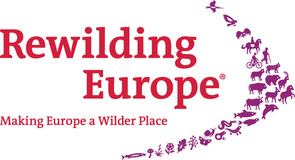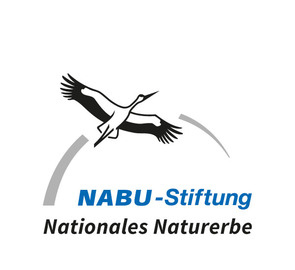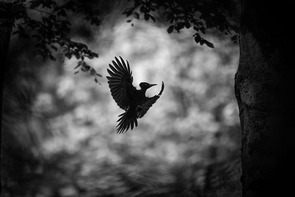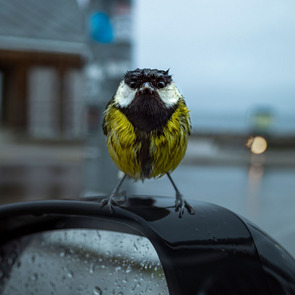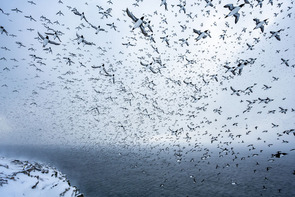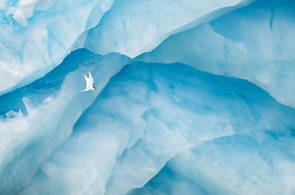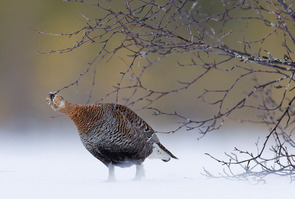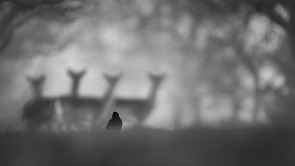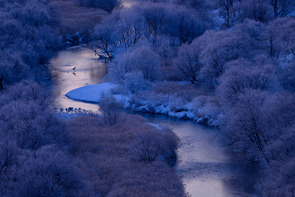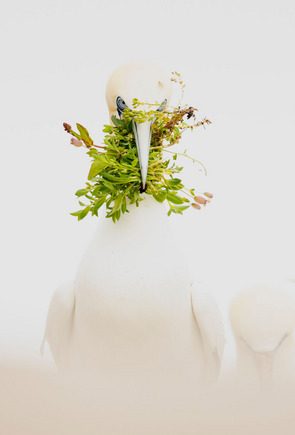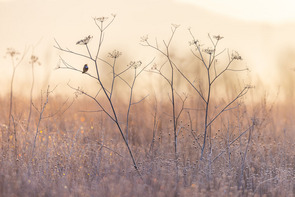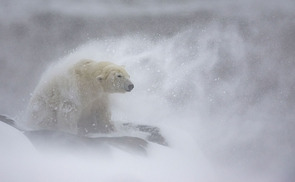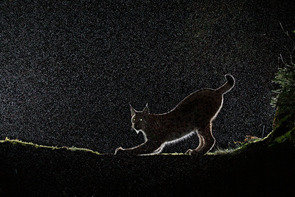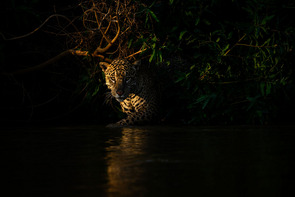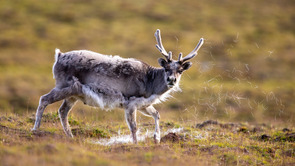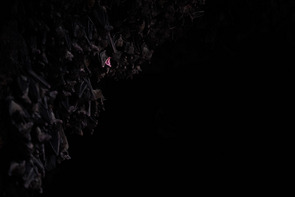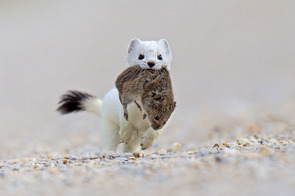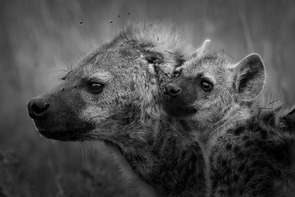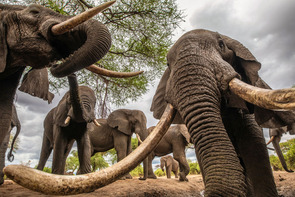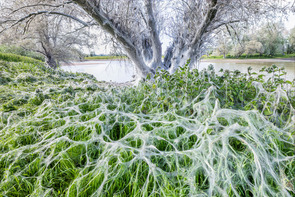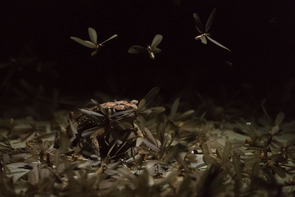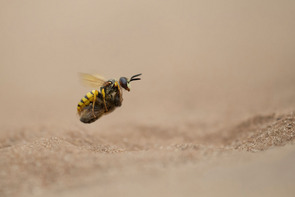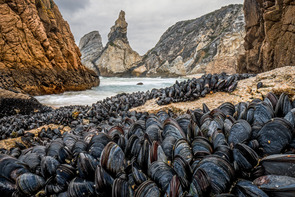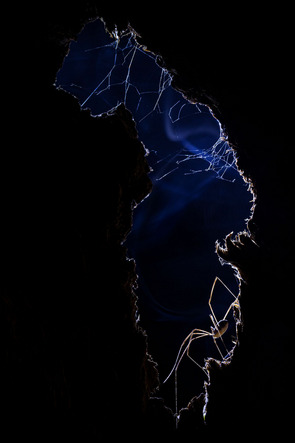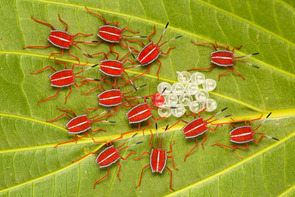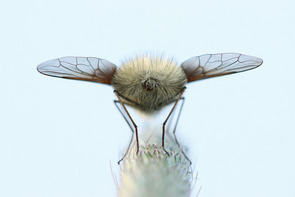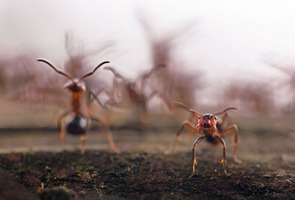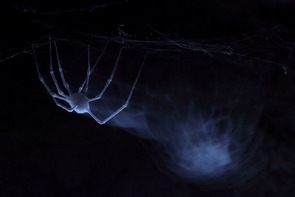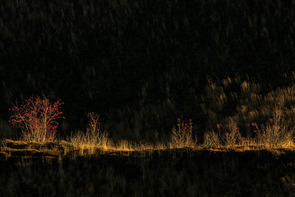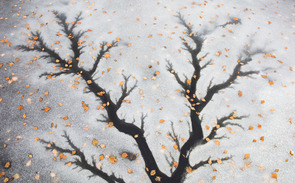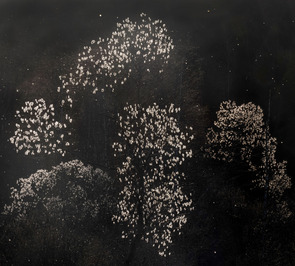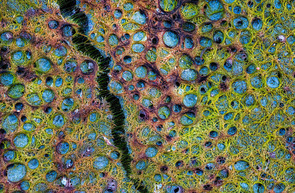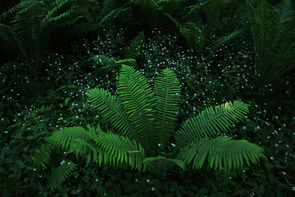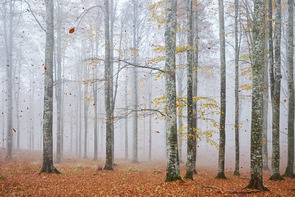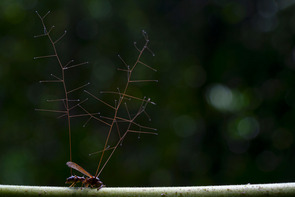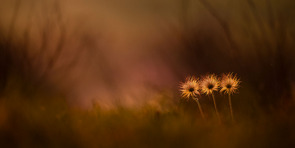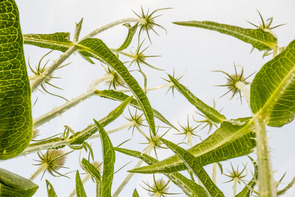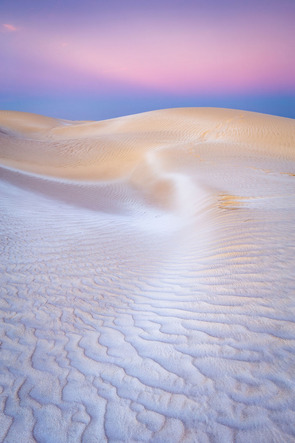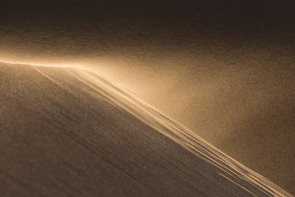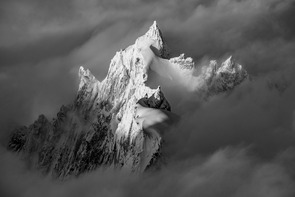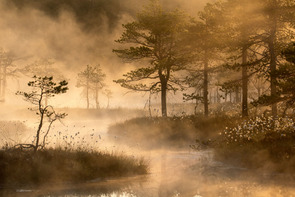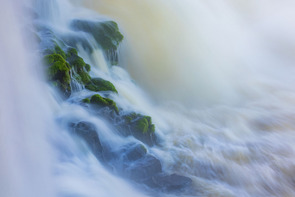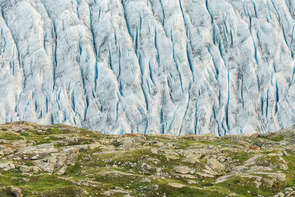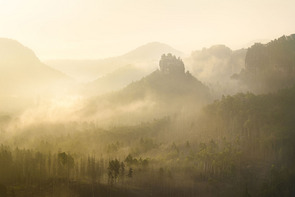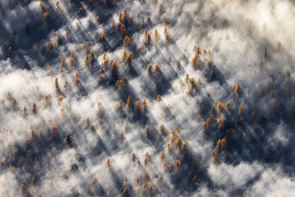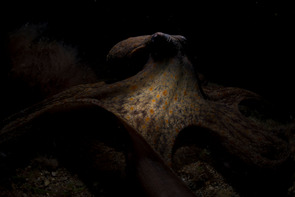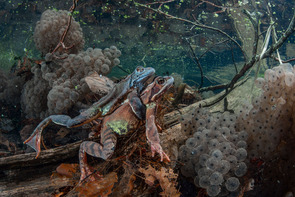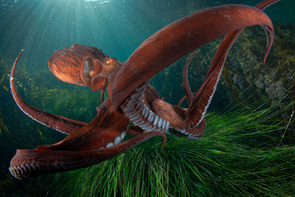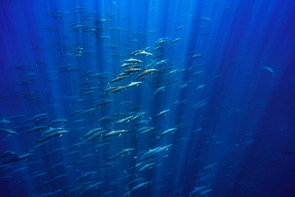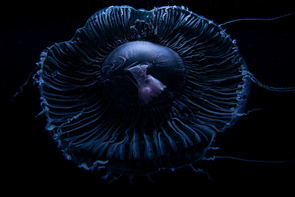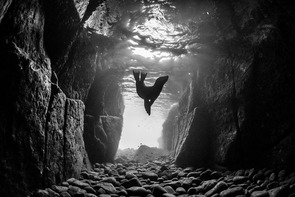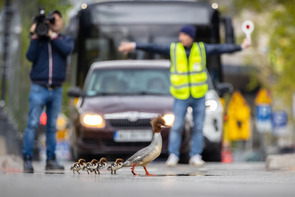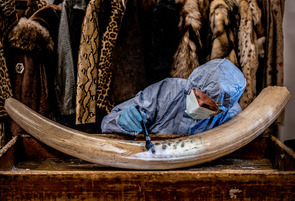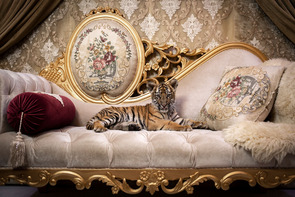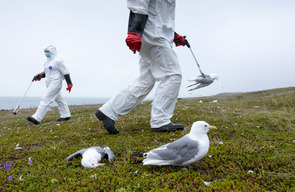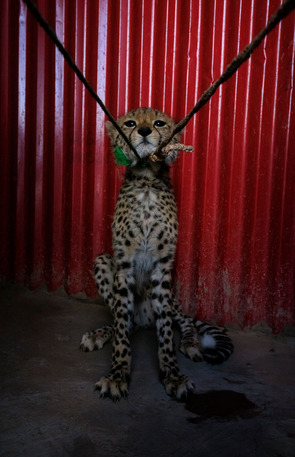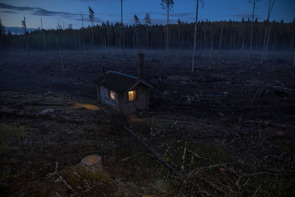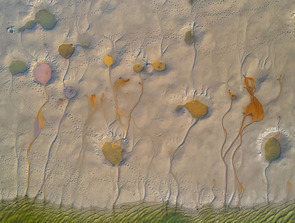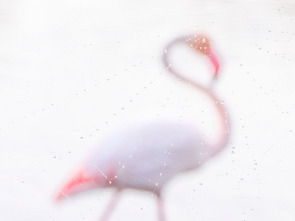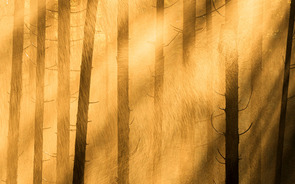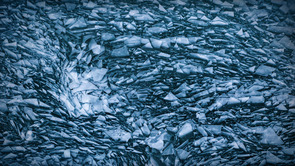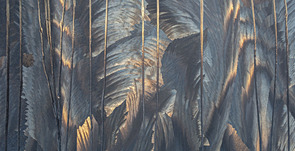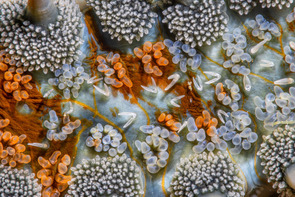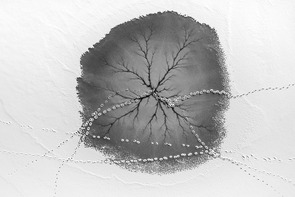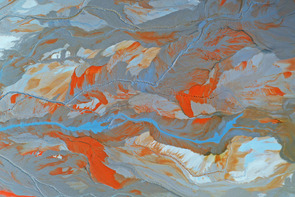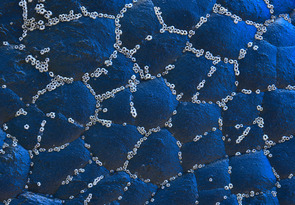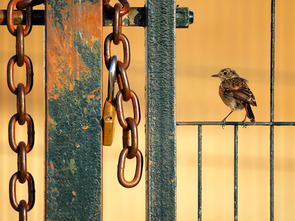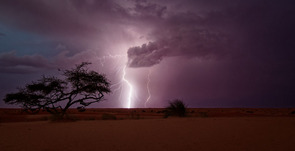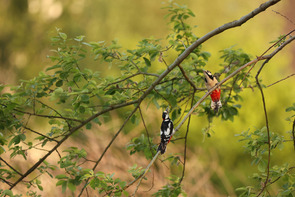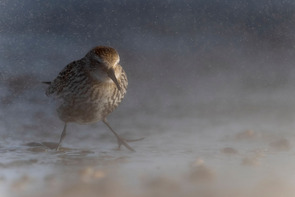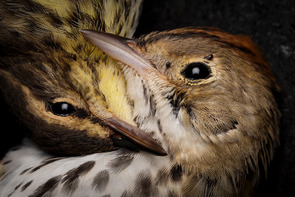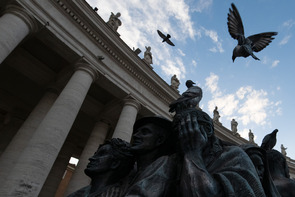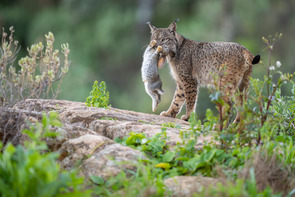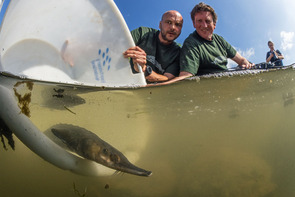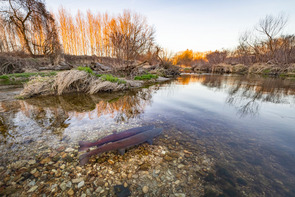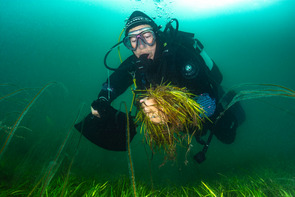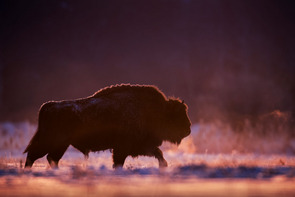Overall Winner: Jaime Rojo (ES)
IN THE FOREST OF THE MONARCHS
Huddled together, overwintering monarch butterflies (Danaus plexippus) hang in the trees of Mexico's El Rosario Monarch Butterfly Sanctuary. At these high altitudes it is cool and relatively humid, and the monarch butterflies have adapted to the same ecological conditions as the trees, mostly Oyamel firs (Abies religiosa). The butterflies are well protected from the elements by the tree canopy and also by their congregation in huge numbers, but even the smallest changes in the forest cover can have a negative impact on the sensitive microclimate to which the butterflies have adapted. Despite the conservation measures that led to the establishment of the protected area, deforestation was still a problem in the early 2000s. A Mexican-led international coalition of governments and non-profit conservation organisations established a trust fund during this time to work with local communities to reduce the rate of deforestation, which has been steadily declining since 2009.
Nikon Z9, 100-400mm, ISO 800
BIOGRAPHY JAIME ROJO
Jaime Rojo is a Spanish photographer who combines a passion for wild nature with a wealth of experiences in environmental issues and excellent storytelling skills to create visual stories centred on wilderness and wildlife. As a staunch advocate of nature conservation, he hopes that his images can ultimately become a tool for environmental protection. Jaime studied environmental sciences in Madrid and began his professional career in Mexico in 2004 working for a conservation organisation that promotes the creation of new protected areas, biological corridors and rewilding initiatives. After more than 15 years abroad during which he directed numerous environmental communication campaigns, Jaime returned to Spain in 2020 where he continues his outreach work to this day. His most recent projects include Saving the Monarchs, a photographic story on the cover of the January 2024 issue of National Geographic about the monarch butterfly’s migration and Andorra al natural, a project to raise awareness for the fascinating biodiversity of this small country in the Pyrenees.
Jaime is a photographer, creative director and communications consultant who works with environmental organisations, educational institutions, government agencies and businesses worldwide, and has recently delivered a talk featured on TED.com. Jaime is a National Geographic Explorer, Senior Fellow of the International League of Conservation Photographers and trustee to The WILD Foundation. His work has won awards in prestigious competitions including World Press Photo, Wildlife Photographer of the Year, and Pictures of the Year International.
www.rojovisuals.com
@jaimerojo
Category: Young Photographers to 14 Years
This category invites young photographers in two age groups (up to 14 years old and 15 to 17 years old) to enter their five best photographs, irrespective of the themes of the categories (they do NOT need to comply with the given categories).
Category: Young Photographer 15 to 17 Years
Category: Fritz Pölking Prize and Fritz Pölking Junior Prize
The Fritz Pölking Prize is a special award of the competition European Wildlife Photographer of the Year, awarded by the German Society for Nature Photography (GDT) and Tecklenborg publishing house since 2007 in memory of the late Fritz Pölking. It is given away annually to honour exceptional work in the field of wildlife photography.to FRITZ PÖLKING PRIZE
Category: Rewilding Europe Award
This award was offered by the GDT in cooperation with Rewilding Europe to honor outstanding achievements in photography with a focus on rewilding. The aim here is to give nature time and space to restore itself in regions that have been affected by human activity.to REWILDING EUROPE AWARD
Introductory note to the GDT contest European Wildlife Photographer of the Year 2024
from Sabine Riewenherm
Nature is "in" - and increasingly at the focus of (social) media: aesthetic, unusual and spectacular motifs fascinate, evoke emotions, and inspire people to go outdoors. However, nature in and of itself is often not (or no longer) sufficient to impress on YouTube and Instagram. Unfortunately, some people (mis)use nature for their personal staging. Being considerate of animals, plants, and the often fragile and threatened environments which they inhabit is by no means a matter of course for all influencers.
Nature photography in its classic form, as practiced by the German Society for Nature Photography (GDT), sets different priorities and leads by example! The photographers whose images can be admired on the following pages promote a respectful approach to nature. Their aim is to evoke emotions, whether positive or negative, that inspire interest in the species, habitats, and interactions that are shown, while at the same time advocating nature preservation.
One of these exemplary photographers is Jaime Rojo from Spain, the winner of this year's European Nature Photographer of the Year competition. In his work for National Geographic, Jamie travelled to the forests in which monarch butterflies overwinter and captured images of these very special insects as they gather in huge clusters on fir trees.
The life history of monarch butterflies is almost even more fascinating than their colourful appearance: Every autumn, huge swarms of monarchs fly south thousands of kilometres from their North American summer habitats to the mountains of Michoacán in central Mexico - only to migrate back north again in spring. But their future - like that of so many other species - is threatened. Monarch habitats are in peril: Intensive agriculture combined with the use of herbicides is destroying the milkweed plants essential for their voracious caterpillars, illegal logging is destroying their roosting sites, and increasing storms in winter related to climate change are causing monarchs to perish en-route.
Habitat destruction is also the shared topic of the winners of the Fritz Pölking Prize and the Fritz Pölking Youth Prize: the Spanish photographer Hector Cordero chronicles the life and death of birds in New York City – but also shows promising solutions for improving bird survival among the mirrored facades of the city’s skyscrapers. Gianluca Damiani from Italy devotes himself to the entire spectrum of animal life in the urban jungle - from toads and foxes to peregrine falcons - and provides insights into the lives of animals thriving among Rome’s ancient walls, hidden from the visitors and residents of the Eternal City.
However, not only the award-winning images are remarkable in this year. At least as impressive is the fact that almost 1,000 photographers took part in the 2024 competition, submitting just under 18,000 images and clearing affirming the significance of nature photography The excellent submissions are also proof that the GDT's guidelines are being recognised. In addition to demanding and promoting a contemporary and creative approach to nature photography, the GDT also seeks to increase awareness for nature’s vulnerability and to promote respectful and careful behaviour. It would be great if the work of each GDT photographer were to convince just one influencer to set an example for the harmonious coexistence between human and nature.
Sabine Riewenherm
President of the German Federal Agency for Nature Conservation
Patron of the competition
Jury’s comment
by Marcus Westberg (on behalf of the jury)
If there is anything more challenging than finding an entirely new subject to photograph – especially in an era when everyone has a camera in their hand, purse or back pocket, if not in the latest ThinkTank bag – it is perhaps to take an old subject and photograph it in an entirely new way.
For the second year in a row, the winning image of the GDT European Wildlife Photographer of the Year competition is an exploration of the lives of invertebrates as seen through the eyes and lens of a Spanish nature photographer. In 2023, Javier Aznar González de Rueda brought us into the unexpected maternal embrace of a stink bug. This year, Jaime Rojo took our collective breath away with a fresh take on a scene that has been photographed a million times before.
What makes a good photograph? That might seem like a simple question, but it certainly kept us busy during our judging weekend in Potsdam. With different backgrounds and photography approaches, this year’s jury – senior photo editor for National Geographic Alexa Keefe, urban wildlife photographer and podcaster Matt Maran, land- and seascape photographer Rachael Talibart, GDT president Stephan Fürnrohr, and myself, a conservation photojournalist – disagreed frequently, though always agreeably.
Beyond the question of what is good lurks another, equally difficult, issue: what makes a worthy winner? This led to numerous discussions on a wide variety of topics, from ethics - how do we feel about baited hides, or flash use on nocturnal animals? - to the use (or overuse) of specific photography techniques. What have we seen before? What shortcomings can be overlooked if the image is original? Should the effort involved in its capture – in so far as this can be surmised – be a factor? In photojournalism, should it matter if the story being told is one of courage or one of greed?
Photography seems to be perpetually moving from one crossroads to the next, but despite current concerns about artificial intelligence, false narratives, and waning ethics – or perhaps because of those concerns – it has never been more important. As the world around us burns, floods, and is depleted of biodiversity, we need photography. We need haunting images to inspire us to take action, and we need beautiful images to remind us what we are fighting for. We need images that tell us stories.
Storytelling is an art that both our Fritz Pölking Prize winners have mastered. Hector Cordero’s winning portfolio about birds colliding with skyscraper windows was as aesthetically pleasing as it was thoughtfully put together, and Gianluca intriguing study of Rome’s urban wildlife – the winner of the junior award – combined creative ingenuity with photographic skill and a deep knowledge of his home city. Even so, both faced stiff competition, as there were some excellent entries among this year’s submissions.
Picking the top ten images in each category was just as difficult as selecting the winners. As we re-evaluated photographs from one round to the next, listening to the thoughts and observations of our fellow judges, opinions changed and votes were revised. On a different day, an image outside the top ten might have ended up category runner-up; the standards were that high, the margins that narrow, and all of this was, of course, a very subjective process. Having said that, and although not every choice was unanimous, the final selection ended up both compelling and well-balanced. To all the awarded photographers: our heartfelt congratulations. Your talent, dedication, and creativity were a pleasure to behold. To Stephan, Rachael, Matt and Alexa, and to Sandra and Karen – and Mowgli, obviously, because what would life be without the presence of four-legged friends? - thank you for making this such a fun, memorable experience.
We should finish where we began, with viewing an old subject through a new lens. After a weekend of intense debates and split votes, it is somehow fitting that selecting the overall winner was among the easiest decisions of the entire judging process, requiring virtually no discussion. Jaime’s classically beautiful Monarch butterfly photograph, with its layers of depth and detail, is timeless. “Suddenly, an animal that you have seen many times before becomes something altogether new,” in the words of one judge. The image contains within it “a slow dawning of magnificence … an awe of discovery, a testament to the power of photography”.
I couldn’t have put it better myself, so I won’t try. Put simply, this is nature photography at its finest, and you really did take our breath away, Jaime. Congratulations.
We´d like to thank our sponsors:










